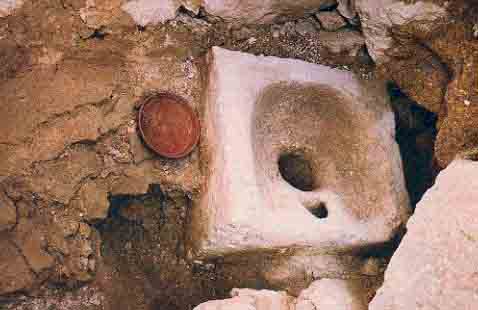Image Details

Courtesy of the City of David Society
The best seat in the house. Though much has changed in the last 2,600 years, certain basics remain the same: excepting its lack of plumbing, the toilet shown here unmistakably resembles its modern-day counterparts. Made of a single large block of Jerusalem limestone and set into the poor over a cesspit, the toilet dates to the destruction of Jerusalem by the Babylonians in 586 B.C.E.
The toilet has two openings on top. The larger one goes straight down, while the smaller one, as can be seen in the photo, empties to one side; the excavators suggest the second opening may have been designed for male urination. A complete ceramic bowl, at left in the photo, was found next to the seat. It may have been used for handwashing or for pouring liming agents into the cesspit.
Using the tools of palynology (the study of pollen) and archaeoparasitology (the study of parasites uncovered in excavations), archaeologists have been able to study microorganisms found at this and another recently discovered toilet to reconstruct the diet and diseases of First Temple Jerusalemites.
